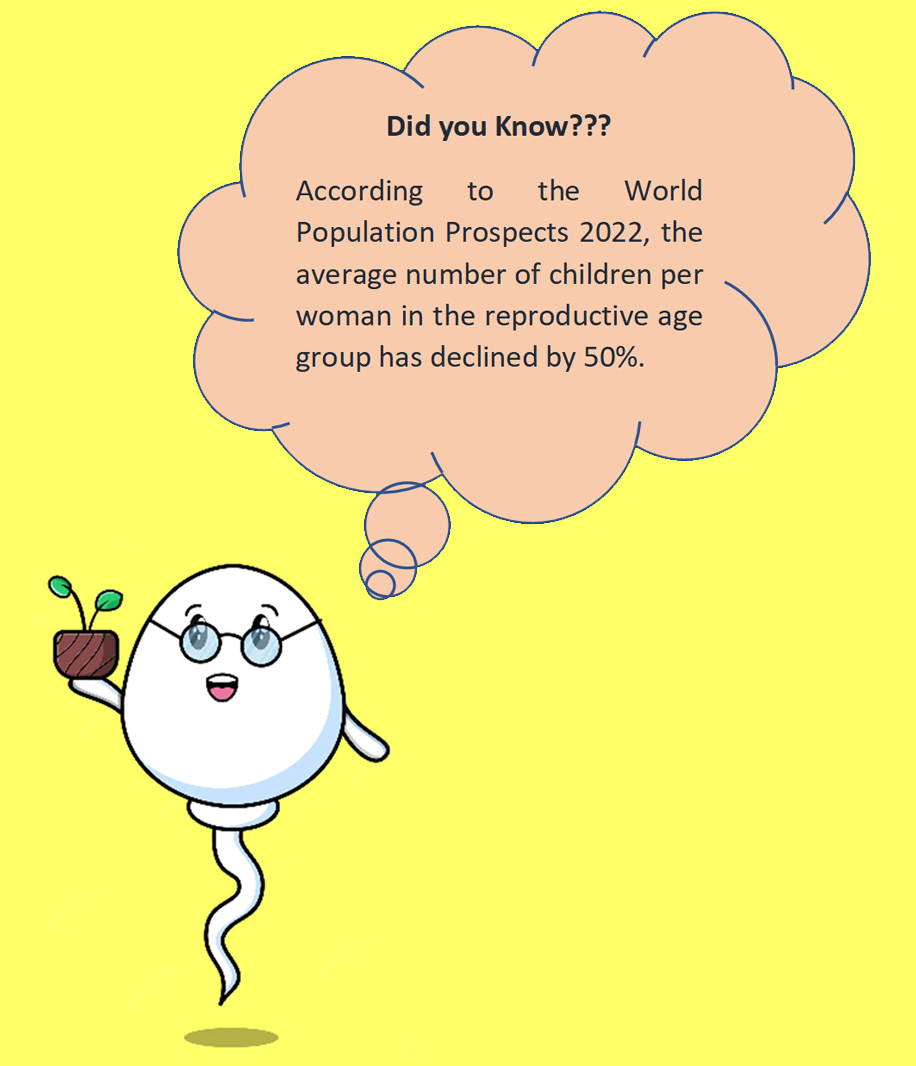Declining Fertility
There was a time when number of children born per woman was high and the world started thinking of all possible scenarios out of rising world population. On the contrary, now we are seeing that the number of children born per woman has reduced significantly. The average number of children born per woman has been declining sharply in most developed countries during the last decades.
Present generation men and women of reproductive age plan to have fewer children than their earlier generation and they also want to delay the pregnancy to later stage of life. Postponement of childbearing is a new behavioural change seen in many countries. A wide range of personal, situational, and social factors affect childbearing decisions. One of the major factors for this is a lack of social and structural support for women to have their children at a time in their lives when their fertility is likely to be more viable without compromising their ambitions.

At the time of Independence, India’s fertility rate was 6 per woman; which further declined to 4 in 1990s. The National Family Health Survey (NFHS) of 2021 states that the fertility rate has fallen below the replacement level for the first time to 2.0 in 2021.
5 states having fertility rate above replacement rate
- Bihar
- Meghalaya
- Uttar Pradesh
- Jharkhand
- Manipur
Recent trends of reduced fertility are caused by delayed marriage and a rise in education levels. A decline in fertility is caused by:
- • Modern contraceptive usage
- • The less marital education gap
- • Delayed marriage
The chance of women getting pregnant reduces slowly but significantly over time beginning around 32 years, and the decline is more rapid after 37 years of age. There is an expected reduction in fertility related to age, the raised incidence of problems that reduce fertility and the increased risk of spontaneous abortion and aneuploidy in women who are above 35 years. Other causes of the decline in fertility in females are:
- • Reduced frequency of intercourse
- • Decreased quality of uterus due to ageing oocytes
Why are women having fewer children?
This does not exactly mean a falling sperm count. There are three main factors to this:
- • Women’s empowerment, particularly in education and the workforce
- • Lower child mortality
- • The increased cost of raising children
However, the reduction in fecundity of men with age is modest. Couples also appear to experience declining fecundability with increasing male age, precisely above 40 years. 20th century noticed the decline in the reproductive potential of men.
Education and enhanced awareness of the effect of age on fertility is essential in counselling the patient who desires pregnancy. The Basic Infertility Course and the Reproductive Medicine Courses offered by Medline Academics covers the topic- Declining Fertility in detail. To know more about the subject, join our courses Now!
